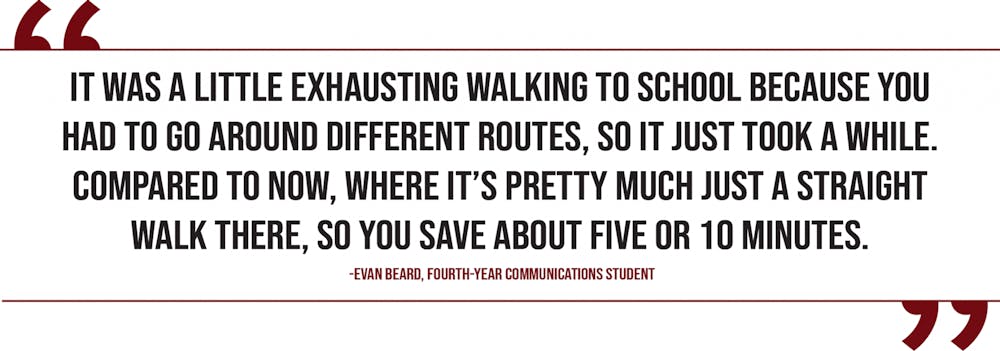With the spring semester in full swing, the new Greene Street bridge has received a mixed response from USC students who started using it this month. Some students find the new bridge convenient, while others say it disrupts their original commute.
The bridge had its grand opening on Dec. 7 after construction stretched three years from the beginning of 2020 to the end of 2022.
Located near Colonial Life Arena, the bridge goes over the railroad tracks that cross Devine Street and Gadsden Street and is open to pedestrians, cyclists and vehicles.
The bridge is phase two of an extensive infrastructure proposal called the Innovista Plan, which was released in 2007. It is a large plan by the City of Columbia that includes multiple projects between USC's campus and the Congaree River.
Phase one, which converted Greene Street into a three-lane roadway with sidewalks and bike lanes from Assembly Street to Gadsen Street, was completed in 2017.
In total, the bridge ended up costing $23 million with funds coming from the Richland County penny sales tax.
Several USC students say that the bridge has improved their commute to campus, as they no longer have to worry about trains disrupting their walk to class.
“It’s nice not having to worry about having to plan your entire day around making sure you didn't get stopped by a train, and it’s right there so it’s super accessible and really easy to get to,” second-year history student Andrew Carboni said.
Some, including fourth-year communications student Evan Beard, have even seen their commute to class shortened by the bridge.
“It was a little exhausting walking to school because you had to go around different routes, so it just took a while. Compared to now, where it’s pretty much just a straight walk there, so you save about five or 10 minutes,” Beard said.

Another byproduct of the new bridge is a reduction in train noises that would wake up residents early in the morning. Before the bridge was constructed, all of the trains passing through were required to sound their horns at the two railroad crossings along their route in the area.
The construction of the bridge resulted in the closing of both railroad crossings: the Devine Street crossing near the Palmetto Compress building and the Gadsden Street crossing behind Greek Village.
“The train no longer honks at three in the morning at those crossings anymore, because it’s not there. So you aren’t waking up at two, three in the morning with the trains, so that’s also been really nice,” Carboni said.
However, there are some students who disagree that the new bridge is more convenient. Namely, the residents of The Apartments of Palmetto Compress, who now have to walk an additional block to cross the bridge.
Those residents used the Devine Street crossing to get to class but have to find a new route with the crossing shut down to pedestrians.
“I used to just leave and walk over the railroad tracks, and this has added seven minutes to my walk,” Alli Pauley, a third-year political science student and resident of Palmetto Compress, said.
Third-year computer information systems student Lyn Cork appreciates the spectacle of the bridge but agrees that the shutdown of the railroad crossing has disrupted her commute to class.
“When I saw them building this, I thought this was going to be an addition to the railroad crossing, but now, the railroad crossing has been completely removed," Cork said. "There’s no convenient way to get through campus now."
Even those who support the new bridge are somewhat confused by the closing of the original railroad crossings.
“We didn’t know they were going to close that one spot where we were crossing previously, so that was a surprise for us,” Carboni said.
Pauley feels that the bridge has now isolated students who live in Palmetto Compress and the surrounding area from the rest of campus.
“We’ve been just cut off from the whole world over here,” Pauley said.

